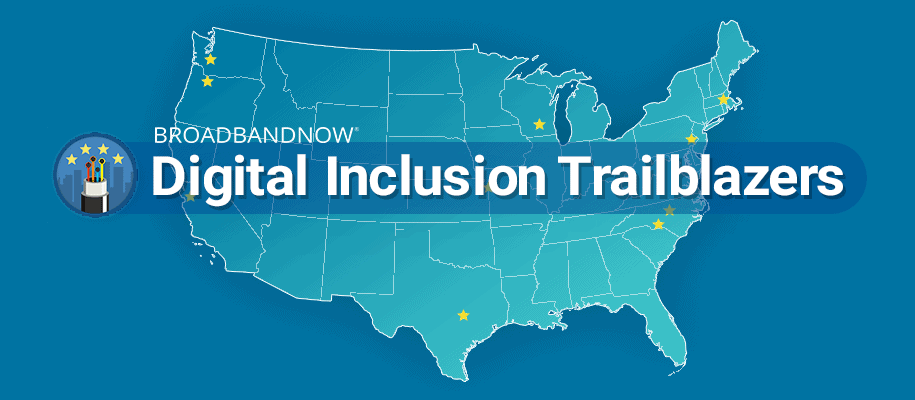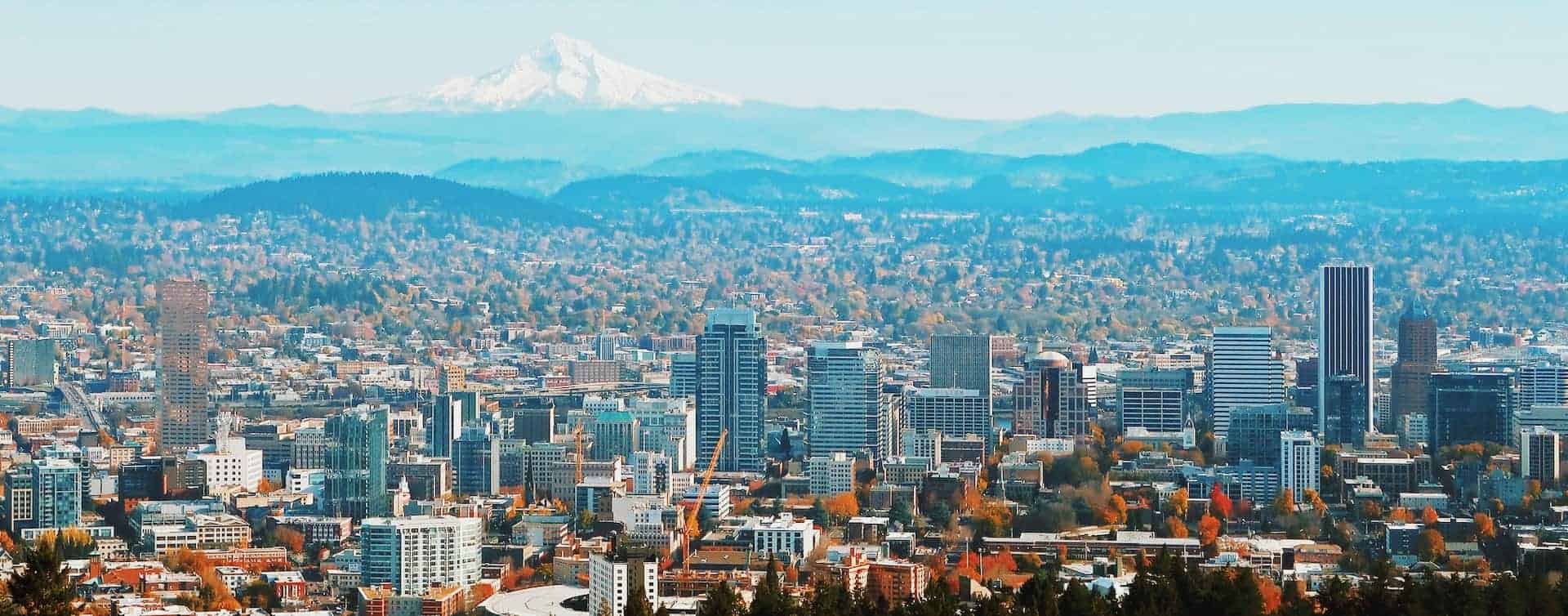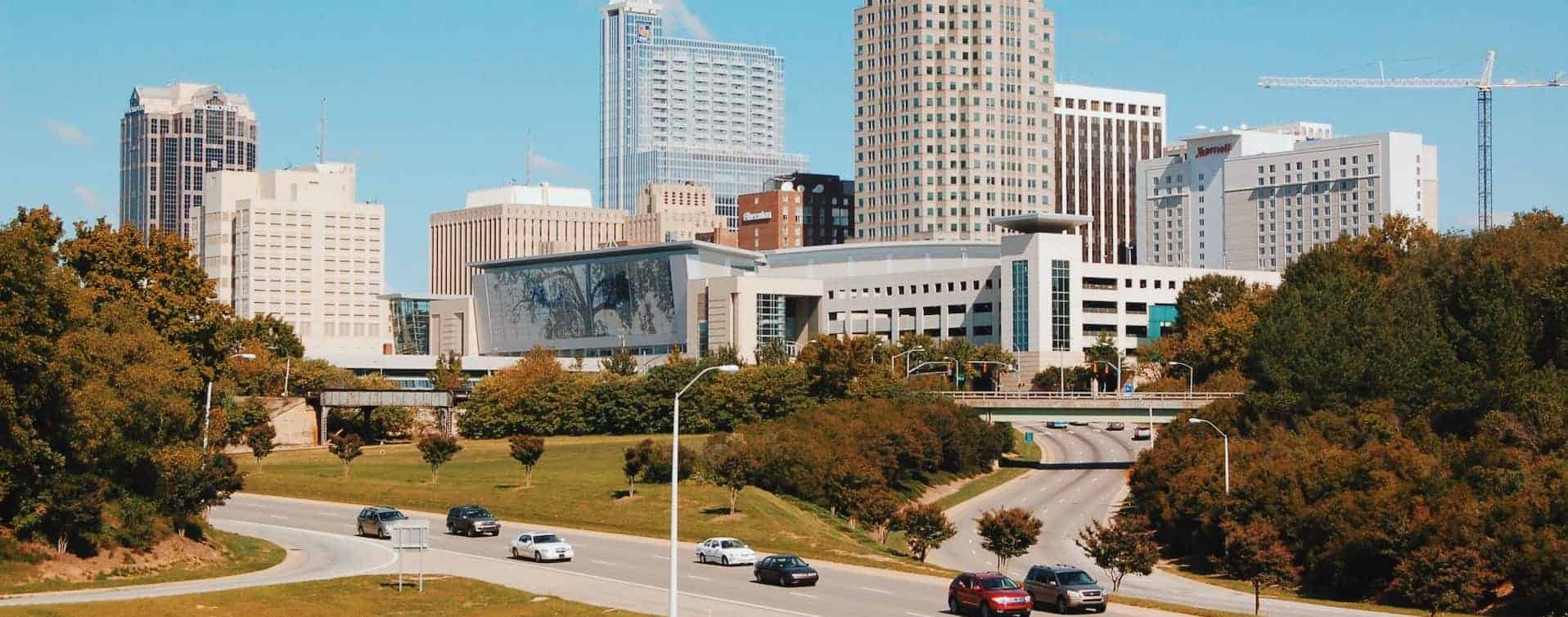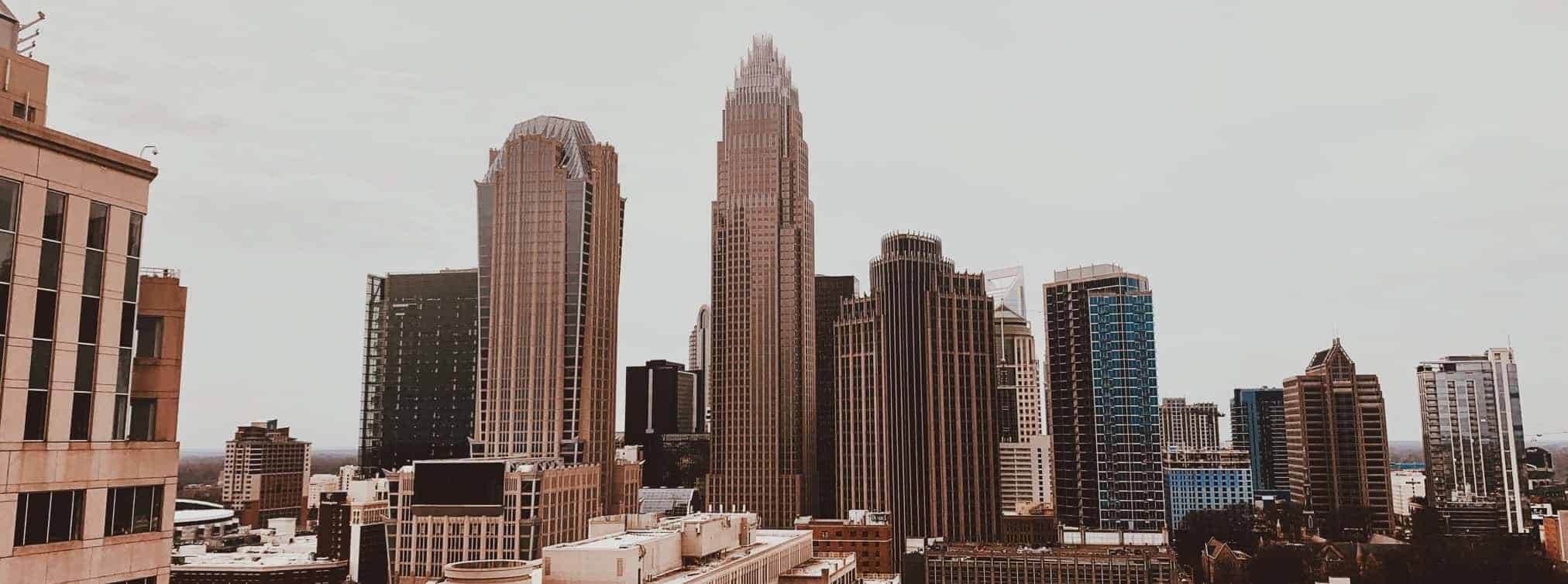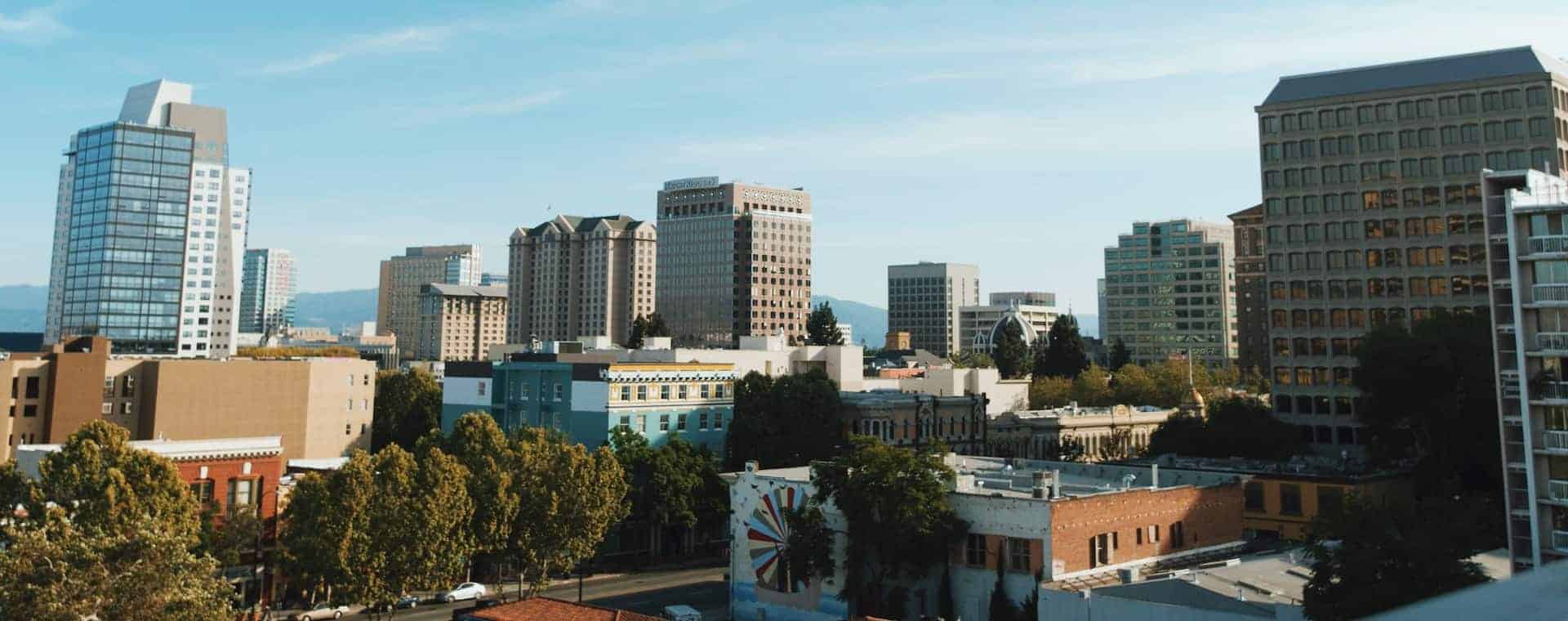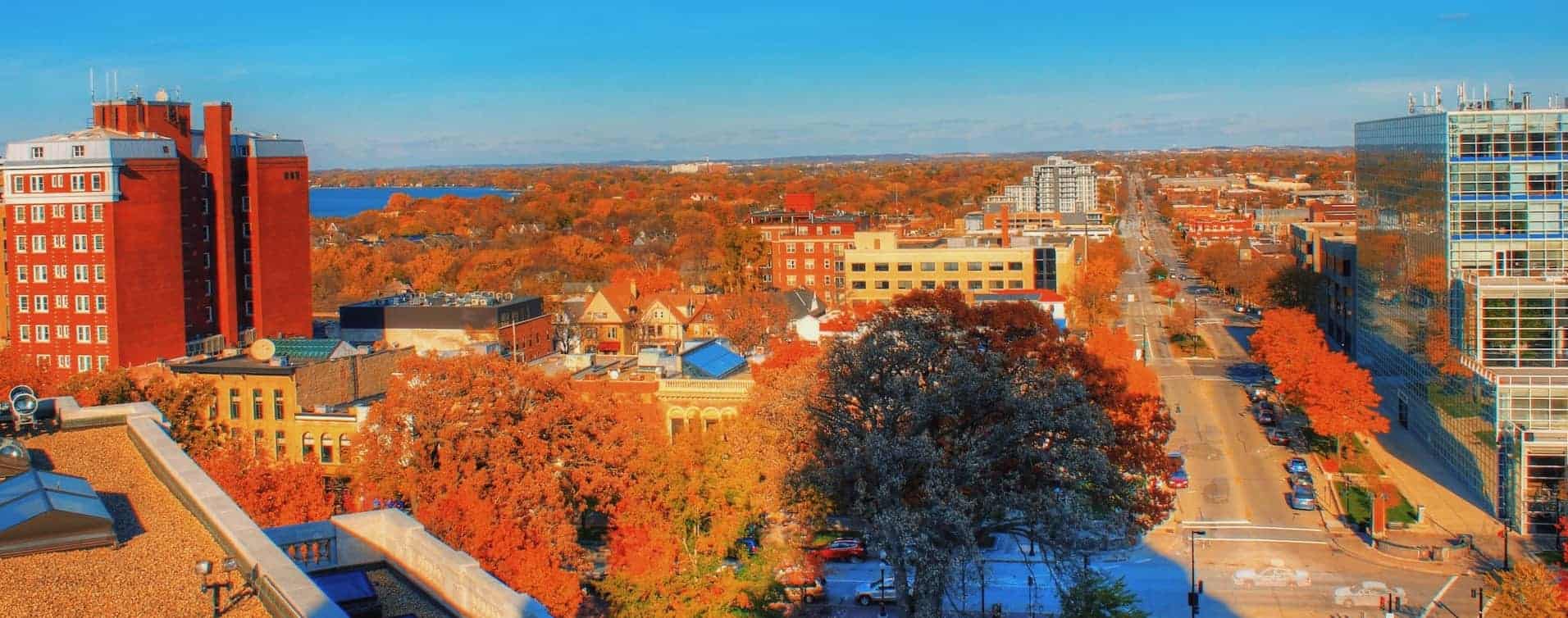Robust access to broadband and technology is vitally important for participation in the modern economy, and yet, more than 21 million Americans currently lack access to even basic broadband-level internet speeds.
Cities around the nation are waking up to the idea that a connected populace is more informed, more financially stable, and healthier overall. Now, local governments are leading the charge, bringing unprecedented levels of access and awareness to their residents. We’re pleased to recognize ten outstanding cities – and their public/private organizations – as this year’s Digital Inclusion Trailblazers.
Digital Inclusion Fast Facts
- 21 million Americans still lack access to a broadband-level internet connection.
- Roughly 146 million people in the U.S. (about 45 percent of the population, or equivalent to the entire population of Russia) do not have access to a low-priced plan for residential wired broadband.
- Zip codes in the bottom 10 percent of population density pay up to 37 percent more on average for residential wired broadband than those in the top 10 percent.
- According to the Pew Research Center, roughly one third of Americans say that the internet is the most important resource available to them during their job search.
What Is Digital Inclusion?
Digital Inclusion refers the core concept that all individuals have an inherent right to access broadband connections and technology, as well as the skills and knowledge to properly leverage them.
This means that regardless of socioeconomic status, physical ability, language, race, gender or any other characteristics that have been linked with unequal treatment in the past, everyone should be on equal footing in an increasingly digitally-driven world.
Cities Forging Ahead With Digital Inclusion Initiatives
The following cities have displayed substantial, measurable progress toward creating a digitally inclusive environment, bridging the digital divide, and providing 21st century opportunities to their residents, and we’re proud to spotlight their efforts.
Organization: Digital Inclusion Network
Key Accomplishment: Multnomah County Library’s and Free Geek’s Welcome to Computers digital inclusion project has grown to include 10 community-based organizations, who collectively provide thousands of hours of digital inclusion training to low-income individuals, immigrants, and refugees. 375 computers have been given away for free thus far.
Portland has a reputation for being a progressive metropolis committed to the working lifestyles of the future, so it should come as no surprise that the city is one of several leading the charge when it comes to closing the digital divide in the US. In recent years, Portland has blossomed into a sort of tech haven, with 98% of its residents having access to multiple broadband internet connections and 79% having access to a fiber connection.
In 2014, the community came together to establish the Digital Inclusion Network, a coalition aimed at “raising awareness about digital equity barriers and developing solutions to bridging the digital divide”. The group holds an annual Digital Inclusion Summit, and Mayor Ted Wheeler has publicly supported their efforts, instituting a “Digital Inclusion Week” for the city in 2018. Rebecca Gibbons, Broadband & Digital Equity Program Manager at the City of Portland tells us that these efforts have helped the city reach out to its most vulnerable residents: “95% of individuals in the digital inclusion classes have household income less than $30,000 (100% earn less than $49,000) and 79% of participants speak a language other than English (including Spanish, Russian, Karen and Amharic).”
Gibbons notes that bridging the digital divide in Portland is not a “one-and-done” task, but that the city is continuously learning and adapting to the challenges ahead: “As a local government, we need to continue developing strategies that allow us to innovate with intention. We need to be mindful of the temptation to experiment with new technology (i.e. next-generation wireless networks, Internet of Things, automated transportation, artificial intelligence, etc.) without focusing on equity as a universal design principle. Because the unintended consequence is creating or exasperating barriers to digital access.”
Organization: Austin Pathways
Key Accomplishment: Austin Pathways has partnered with Google Fiber in order to provide free basic broadband access to 1,838 residential public housing units. The organization hopes to complete this within the next several years.
Austin’s reputation as a business and tech mecca is well-founded; the Texas city has attracted scrappy startups and massive new headquarters alike in droves in recent years, and connectivity has been a key driver of this trend. 99% of Austin residents currently have access to multiple broadband connections, with the average user having 5-6 companies to choose from.
Austin has numerous city, private, and nonprofit programs working toward bringing all of its residents up to speed in the digital age. The city’s Unlocking The Connection program is helping to bring free broadband internet access to low-income communities in partnership with Google Fiber, as well as providing refurbished computers and digital literacy courses. Additionally, the city’s Grant For Technology Opportunities Program (GTOPs) provides financial assistance for upgrading computer labs and improving free, basic web access for all residents.
Head of Strategic Initiatives at the Housing Authority of the City of Austin & Austin Pathways Catherine Crago says that community involvement powers the surge in technology adoption currently happening in the Austin area, noting that “When a resident says, ‘It’s for us – it’s not just for them, it’s for us’ we know that resident will help five more. Our Digital Ambassadors are the human connection that help our residents adopt the internet and smart city technologies.”
Organization: Seattle Information Technology
Key Accomplishment: To date, Seattle’s Technology matching Fund has helped more than 43,000 residents create resumes, use email services, and take digital literacy courses for the first time.
Seattle is home to many influential technology giants, from Microsoft to Amazon, and the local government has been committed to the principles of digital inclusion since 1997, the year it launched the Technology Matching Fund. The fund directly supports over 150 local organizations, providing funding and technical resources wherever needed.
98% of Seattle residents are currently serviced by multiple broadband providers, and with $3.9 million in funding, the TMF has assisted more than 43,000 residents since its inception, helping many to create resumes and use email services for the first time. Seattle posts annual progress reports centered around digital equity, and a total of 15 employees now work on the fund as it continues to foster an inclusive vision for the city’s future.
The city is actively engaged in a slew of outreach projects, including the East African Community Services and Helping Link programs, both of which were awarded grants to replace aging computer infrastructure and provide digital literacy courses to minority communities around Seattle. A full list of ongoing projects can be found here.
Organization: Raleigh Digital Connectors
Key Accomplishment: The Raleigh Digital Connectors program and its 163 members have taught computer skills to 3,376 individuals, completed 8,291 hours of community service, and refurbished 892 computers over the past several years.
While Raleigh is not as widely known for its tech economy as some of the other cities on this list, the local government has been doing excellent work fostering connectivity and inclusion for nearly a decade now. According to our most current data, 97% of Raleigh residents have access to multiple broadband providers, and 67% of the population has access to at least one fiber provider. And since 2011, The City of Raleigh’s Digital Connectors program has made great strides in improving access, awareness, and education in the city.
Raleigh Digital Connectors primarily targets low-income seniors, school children, unemployed individuals, female heads of households, and non-English speaking households, and has seen 163 students graduate the course thus far. It has also helped provide digital literacy training and hundreds of free computers to low-wealth communities throughout the city.
Bradley Upchurch, the Digital Inclusion Manager at the Raleigh Housing and Neighborhoods Department told us that the Digital Connecters program has been instrumental in helping to bridge the digital divide in the city: “Every year the city selects 15 young participants for a 9 month long program. Since the inception of the program in 2011, these digital natives have refurbished 892 computers for underserved families, and trained 3,376 on Digital Literacy skills.”
Of course, there is more to be done; Upchurch mentions that as of 2017, 35% of residents who make under $35,000 per year still don’t have access to a dedicated broadband internet connection at home. “Digital inclusion is a priority at the highest level of the city as reflected in the City of Raleigh’s Strategic Plan. Leading the effort is a cross-departmental team including Housing & Neighborhoods, Economic Development, & the IT department.”
Organization: Charlotte Digital Inclusion Alliance
Key Accomplishment: The CDIA has developed (and is in the process of implementing) a digital equity plan to reduce the digital divide in Mecklenburg County from 19% to 9% by 2026.
Charlotte’s tech scene is growing rapidly, and the city is making a concerted effort to ensure that all of its residents are able to reap the benefits. Already, 98% of users have multiple broadband-level options to choose from when it comes to internet service, and organizations like the Charlotte Digital Inclusion Alliance are working to further close the gap and give every resident the education and tools they need to succeed.
In fact, the CDIA has an ambitious goal: reduce the digital divide in Mecklenburg County from 19% to 9% by 2026. The organization’s digital playbook lays out their plan for accomplishing the task, which involves digital literacy courses, funding opportunities, and other resources for the community to take advantage of.
Organization: Tech Goes Home
Key Accomplishment: Tech Goes Home has trained more than 30,000 people and distributed more than 20,000 new computers to graduates, 80% of which have household incomes lower than $35,000 per year.
Boston has long been a champion for digital inclusion, helping to establish the Tech Goes Home program back in 2000. In 2010, the local government wrote a grant that dramatically expanded the program to cover the entire city, and continues to provide funding and office space for the initiative today. 93% of TGH graduates say that the program strengthened their internet skills, and 85% said that they were more likely to use the internet to find employment after completing the course.
94% of Boston residents are well connected with broadband-level speeds, and new initiatives like the Digital Equity Fund are working toward completely closing this gap, ensuring that all residents have the means and skill sets necessary to thrive in a digital economy. In fact, in 2017, Boston allocated $35,000 in grants to local organizations aimed at bridging the digital divide.
Tech Goes Home’s Co-Executive Director Daniel Noyes is realistic about the challenges the organization faces: “TGH serves marginalized individuals who do not have the technology skills or hardware to help themselves tackle un- or under-employment, learn English, navigate a disability, or manage the challenges of supporting one’s children at child care or school with few financial resources. TGH learners range in age from 3 to 93, and largely (80%) have household incomes under $35,000. More than 45% of adult learners are immigrants and nearly 90% are people of color. What keeps me up at night is how often we have to turn people away from our courses because we just do not have enough open spots.”
That said, the longstanding organization is stepping up to meet this challenge head on, with Noyes noting that “with foundational support from the City of Boston, and continued investment from private funders such as Capital One and BNY Mellon, I know we will reach out goal of making Greater Boston the first metropolitan area in the country where technology and the opportunity it provides are accessible to all.”
Organization: KEYSPOT
Key Accomplishment: To date, KEYSPOT has established more than 50 dedicated public access centers, providing digital literacy courses and high-speed broadband to more than 80,000 residents each and every year.
The city of Philadelphia recognizes that robust connectivity is key to a healthy populace, and this is especially evident when looking at the work they’ve done to foster access within city limits; 99% of residents have access to multiple providers, and a staggering 95% have at least one fiber connection available to them.
The city’s own KEYSPOT program has built 50 dedicated computer labs throughout Boston, and in just four years, the public centers have been used more than 750,000 times by low-income and homeless residents looking to apply to jobs, pay bills, and apply for government benefits.
In addition, organizations such as the Digital Literacy Alliance maintains funds that total about $750,000, which is used to offer grants and other resources to programs throughout the city working to end the digital disparity in Philadelphia. The group has worked in tandem with others like the Center for Digital Inclusion and Technology, which routinely offers popup computer labs and other instructional courses to low-income communities across the city.
Organization: Mayor’s Office of Technology and Innovation
Key Accomplishment: In early 2019, the mayor’s office announced the nation’s largest grant centered around digital inclusion, which will be used to bridge the digital divide and bring every single San Jose resident online over the coming years.
San Jose is already one of the best-connected cities in the US, with 97% of residents being serviced by multiple providers, but the local government has adopted a creative solution to completely bridge their digital divide; tax wireless providers like AT&T and Verizon for installing 5G small cells, and use the money to pay for broadband deployment. Mayor Sam Liccardo announced the “Digital Inclusion Fund” earlier this year, and according to StateScoop, it will be the largest of its kind in the nation.
Beyond deployment, the fund will also provide grants to local organizations seeking to offer digital equity education and resources, which has already spurred a competition to see who will receive the funds when they are released later this fall. The mayor’s office seems to be well aware that there is more work to be done in San Jose, targeting actions that would “broaden access to basic digital infrastructure to all residents, especially our youth, through enabling free or low cost, high-speed, 1 gigabit or faster broadband service in several low-income communities, and increasing access to hardware, including tablets and laptops, for low-income students.”
Organization: Connecting For Good
Key Accomplishment: Since 2012, the number of low income urban core residents utilizing Connecting For Good’s computer labs, attending classes and events, and buying or borrowing computers has risen each year, from less than 500 in 2012, to over 12,000 in 2018.
Kansas City’s governance has a vision for its residents; that each of them has access to the internet, has the equipment needed to use it and the skills needed to take advantage of the opportunities a connected life provides. That vision has at least partially come true today; 98% of the local population currently has access to multiple broadband providers, and 95% of these have at least one fiber provider to choose from. That said, the digital divide still persists in the city, and both public and private partnerships are working together to bridge the gap for every resident in the city.
The Kansas City Digital Inclusion Fund aims to provide resources and training to “support local projects that provide computer access; make it easy to get online; help make the internet relevant, exciting, and beneficial for new users; and increase people’s digital skills.“ In addition, organizations like the Kansas City Coalition for Digital Inclusion and Connecting For Good are dedicated local advocacy groups that help low-income residents find free WiFi and computers, as well as offer additional digital literacy training within the city limits.
Tom Esselman, CEO of Connecting For Good, tells us that that biggest challenge ahead for Kansas City is to transition from seeing the issue of a digital divide as one of technology or infrastructure into an issue of compassion, love, and practicality.
“Compassion is required through our growing staff and volunteers who hail from the same areas as our target residents—individuals who have overcome the trauma and hardship of low income urban core life to grasp the opportunities we provide in building not only technology skills, but the human capacity to patiently serve others by refurbishing donated devices and teaching and mentoring students at no charge. Love is required to truly and sustainably impact our clients lives by sticking with them to where they obtain and retain jobs, they escape social and economic isolation, and they productively help themselves and others. Practicality is required in translating the pipeline of skill-building from basic literacy all the way through to jobs and careers that give our most distressed populations reasons to feel needed and valued in our society.”
Organization: DANEnet
Key Accomplishment: Over the past 2 years, DANEnet has helped enroll over 1000 households in low-cost internet service and distributed almost 600 computers to low-income households.
Madison is one of the lesser known (but rapidly growing) tech hubs we’ve featured, but the city is quickly making a name for itself as being a champion for all of its residents’ right to access the internet. Currently, 98% of Madison residents have access to two or more broadband services, and the city is currently partnering with CTC Technology and Energy to design and implement a citywide fiber network.
Additionally, organizations like Everyone On Madison and DANEnet are centered around providing access to IT services and general computer literacy courses in Madison. The groups also provide donated computers and facilitates discounted service sign ups for low-income families in the area. There are still much work to be done in Madison, according to DANEnet Executive Director Alyssa Kenney, “the three biggest challenges for DANEnet are: the end of the ATT Access program in 2020, finding low-cost solutions for Dane County residents in rural communities and continuing to meet the changing digital literacy education needs of the community.”
That said, the organization is stepping up in order to meet these obstacles, with Kenney noting that “our plans to tackle these challenges are to accelerate and grow enrollment workshops before the ATT program ends, partner with new internet service providers on rural service options and continue our efforts to raise money and build partnerships to continue digital literacy in the community.”
